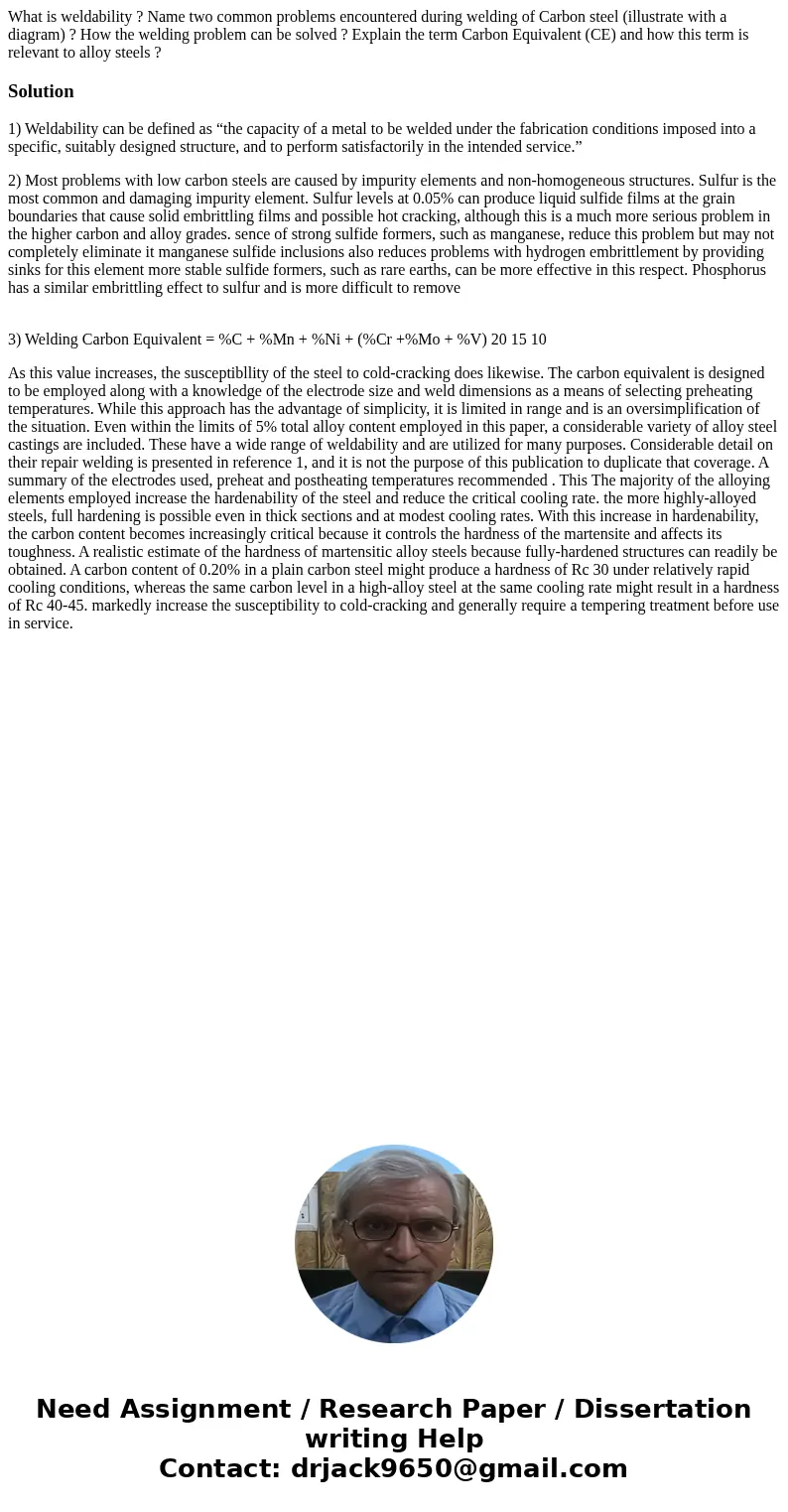What is weldability Name two common problems encountered du
What is weldability ? Name two common problems encountered during welding of Carbon steel (illustrate with a diagram) ? How the welding problem can be solved ? Explain the term Carbon Equivalent (CE) and how this term is relevant to alloy steels ?
Solution
1) Weldability can be defined as “the capacity of a metal to be welded under the fabrication conditions imposed into a specific, suitably designed structure, and to perform satisfactorily in the intended service.”
2) Most problems with low carbon steels are caused by impurity elements and non-homogeneous structures. Sulfur is the most common and damaging impurity element. Sulfur levels at 0.05% can produce liquid sulfide films at the grain boundaries that cause solid embrittling films and possible hot cracking, although this is a much more serious problem in the higher carbon and alloy grades. sence of strong sulfide formers, such as manganese, reduce this problem but may not completely eliminate it manganese sulfide inclusions also reduces problems with hydrogen embrittlement by providing sinks for this element more stable sulfide formers, such as rare earths, can be more effective in this respect. Phosphorus has a similar embrittling effect to sulfur and is more difficult to remove
3) Welding Carbon Equivalent = %C + %Mn + %Ni + (%Cr +%Mo + %V) 20 15 10
As this value increases, the susceptibllity of the steel to cold-cracking does likewise. The carbon equivalent is designed to be employed along with a knowledge of the electrode size and weld dimensions as a means of selecting preheating temperatures. While this approach has the advantage of simplicity, it is limited in range and is an oversimplification of the situation. Even within the limits of 5% total alloy content employed in this paper, a considerable variety of alloy steel castings are included. These have a wide range of weldability and are utilized for many purposes. Considerable detail on their repair welding is presented in reference 1, and it is not the purpose of this publication to duplicate that coverage. A summary of the electrodes used, preheat and postheating temperatures recommended . This The majority of the alloying elements employed increase the hardenability of the steel and reduce the critical cooling rate. the more highly-alloyed steels, full hardening is possible even in thick sections and at modest cooling rates. With this increase in hardenability, the carbon content becomes increasingly critical because it controls the hardness of the martensite and affects its toughness. A realistic estimate of the hardness of martensitic alloy steels because fully-hardened structures can readily be obtained. A carbon content of 0.20% in a plain carbon steel might produce a hardness of Rc 30 under relatively rapid cooling conditions, whereas the same carbon level in a high-alloy steel at the same cooling rate might result in a hardness of Rc 40-45. markedly increase the susceptibility to cold-cracking and generally require a tempering treatment before use in service.

 Homework Sourse
Homework Sourse